Subscriber Benefit
As a subscriber you can listen to articles at work, in the car, or while you work out. Subscribe NowThe oldest commercial building in the St. Joseph Historic Neighborhood downtown is no longer commercial.
Built in 1866 to house a grocery, the brick structure at 926 N. Alabama St. has been transformed into a high-end home by investor and real estate agent Sean Mullins, who has it on the market for $850,000.
But the building still has the hallmarks of that original grocery—at least from the outside. Storefront windows, a commercial entry door and the ghosts of advertisements (one for Owl Cigars and the other for Colonial Bread) painted on the exterior hint at the building’s history.
That’s what attracted Mullins to the property.
“I like a house that has a soul, that’s unique,” he said. “I had lived in Chicago and [Washington] D.C., so I was used to urban living. I lived in an old row house several times. And that’s the vibe this home has. It’s very urban. I think it’s as unique as it gets for someone that wants to be downtown.”
The building sits on land that Israel Traub, a German-Swiss immigrant, purchased in 1854 for a grocery store he opened in 1866, according to the St. Joseph Historic Neighborhood Association. The location continued to be operated as a grocery under various owners, including the Standard Grocery Co., which purchased it in 1922 and housed the store manager on the second floor.
Recently, artist and historian Leah Orr lived in the upstairs space and used the first floor as her studio.
By the time Mullins acquired the property in 2021, it was in considerable disrepair. He bought it from other investors, who had essentially given up on transforming the property. The floors had been ripped out, and the brick walls were barely standing, he said.
Mullins and his partner sunk some $500,000 into a renovation that included construction of a two-story addition with a garage, mudroom and office on the ground level and a primary suite and laundry room upstairs. The resulting house is nearly 2,000 square feet with three bedrooms and 3-1/2 baths.
The open living room, dining area and kitchen are in the original store space, with 13-foot ceilings and large windows that look out onto Alabama Street.
The exterior work was done under the watchful eye of the Indianapolis Historic Preservation Commission, which lengthened the project’s time line and increased its cost, Mullins said. The commission’s rules required keeping several exterior features—such as a side door—that could have disrupted the interior flow. But Mullins wrapped the kitchen’s custom wood cabinets in front of the door on the inside and incorporated its windows seamlessly above quartz countertops.
Although not required to by the commission, Mullins tried to match the interior with the types of finishes that were typical of the late 1800s and early 1900s, he said, including wainscotting and large moldings.
The new floors are light and the color palette neutral, with whites and creams covering the walls and trim—except in the office and bathrooms, where jewel tones and wallpaper add personality.
At the top of the stairs, a lounge and wet bar mark the end of the original building. It’s Mullins’ favorite space.
“It’s almost like it’s a speakeasy,” he said. “You feel like you’re walking into a place where you might light an Owl cigar and have a martini.”
A doorway cut into the back brick wall leads to the new bedroom suite with a walk-in closet, marble-filled bath and attached laundry room. Two more full bathrooms and two bedrooms with exposed brick make up the rest of the second floor.
The project took about 18 months to finish—probably three times longer than it would have taken if the preservation commission hadn’t been involved, Mullins said. It was the first time he’d tackled a project in the commission’s jurisdiction—and he’s not sure he will do so again.
“There’s very much a ‘Mother may I?’ approach” to working with the commission, he said. “That was a learning experience for us and the biggest challenge. It ended up with a great product, but again, that’s why the project took so long.”•
Please enable JavaScript to view this content.

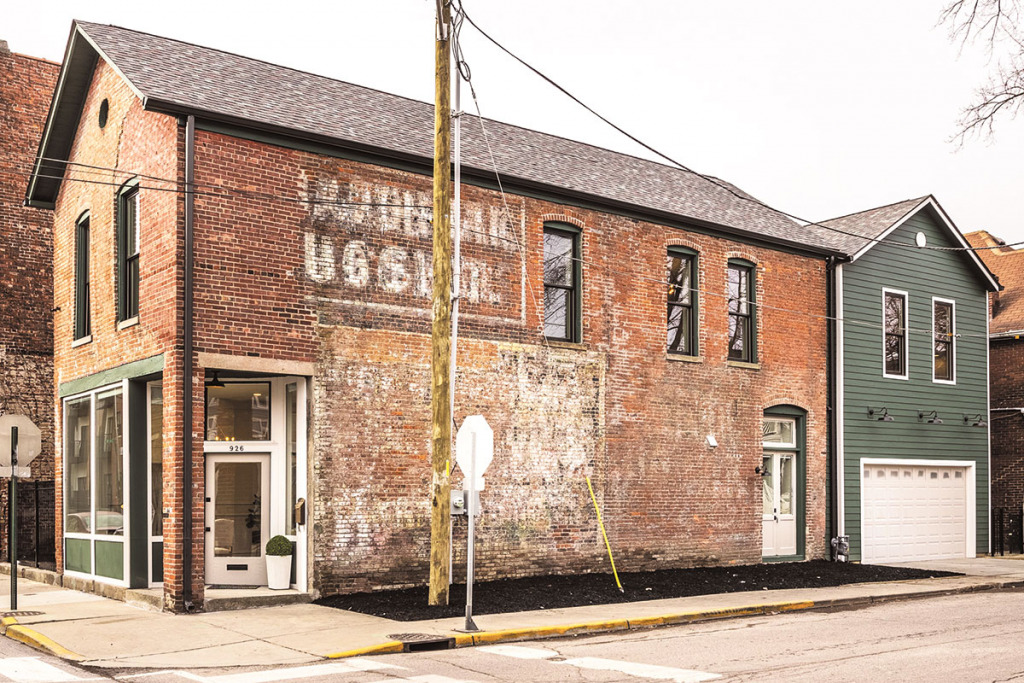
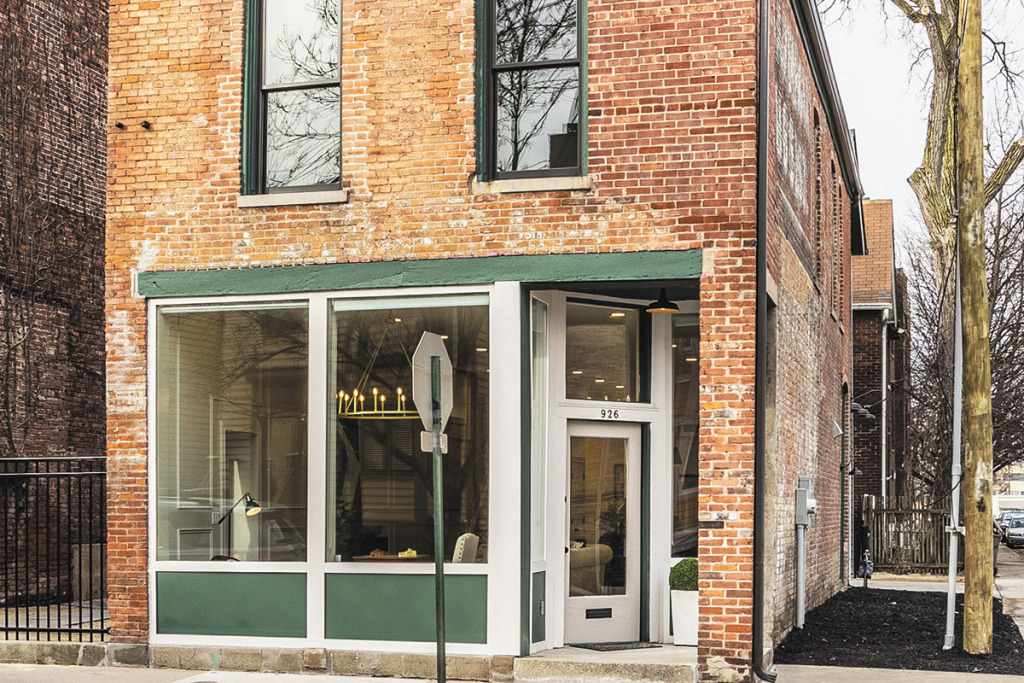
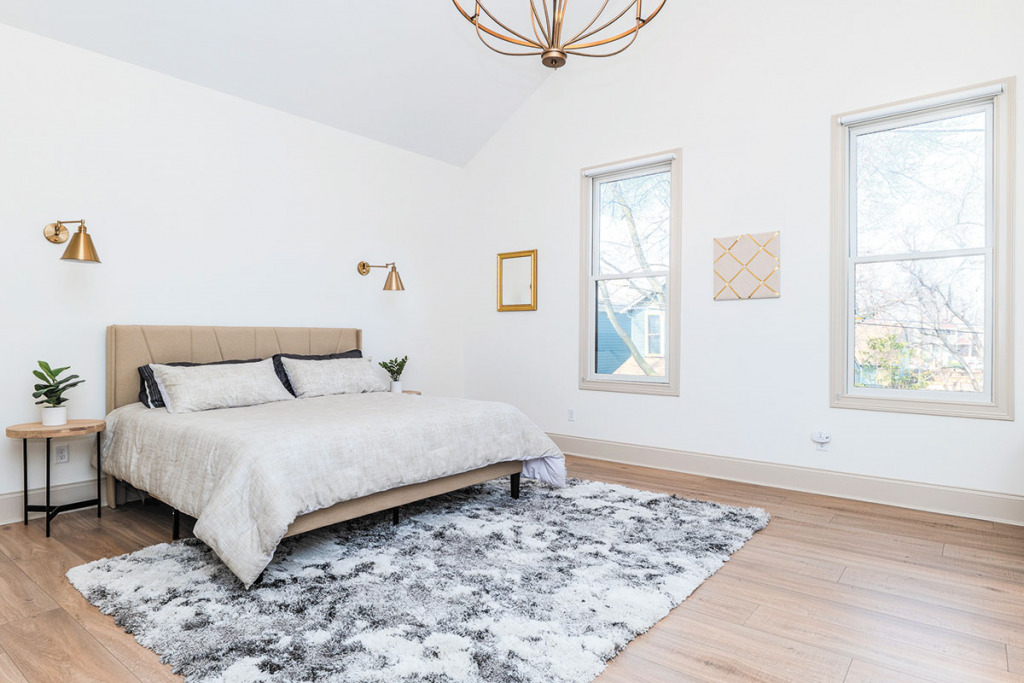
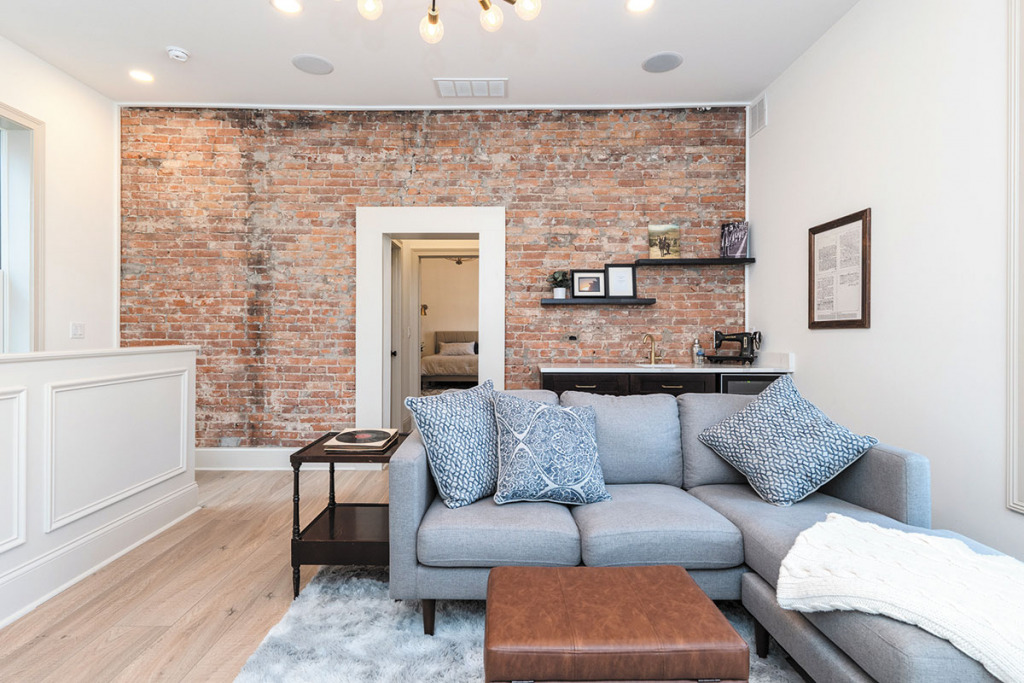
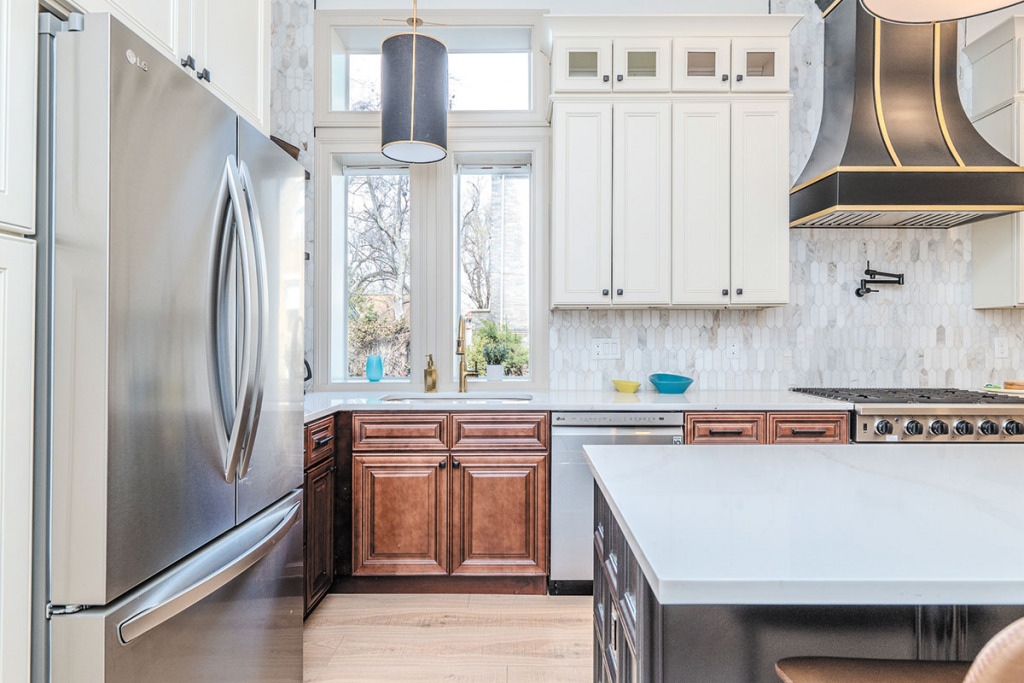
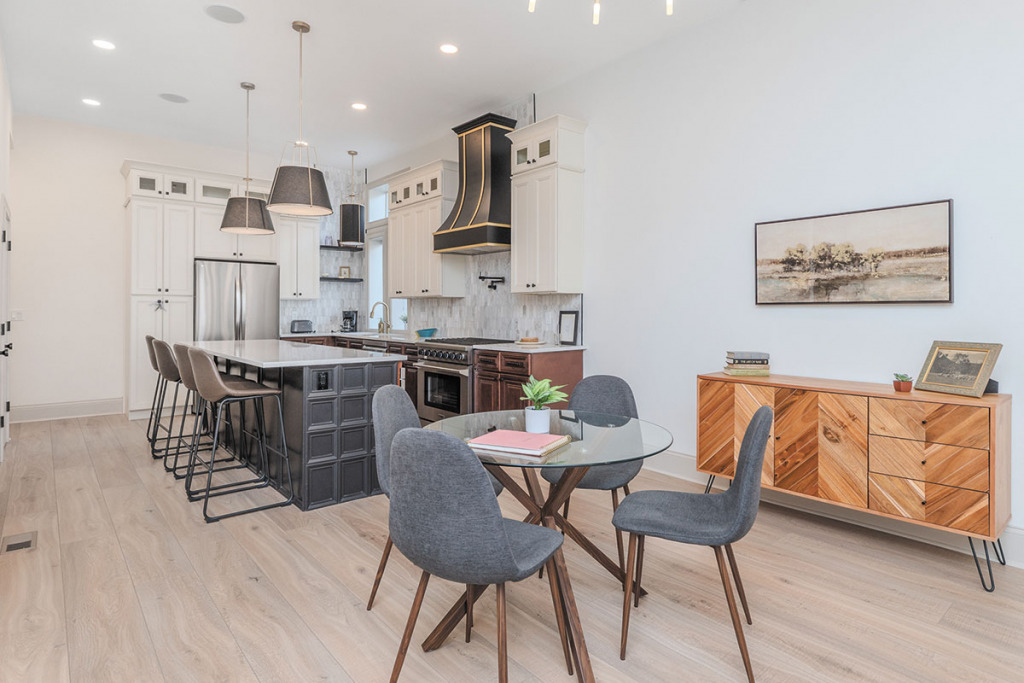
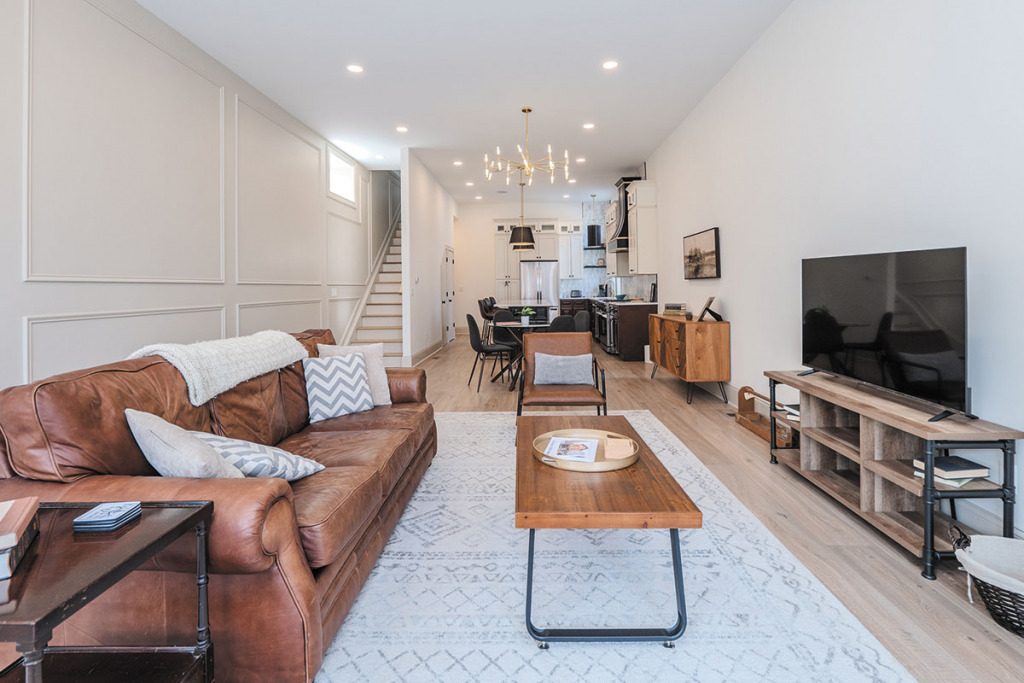
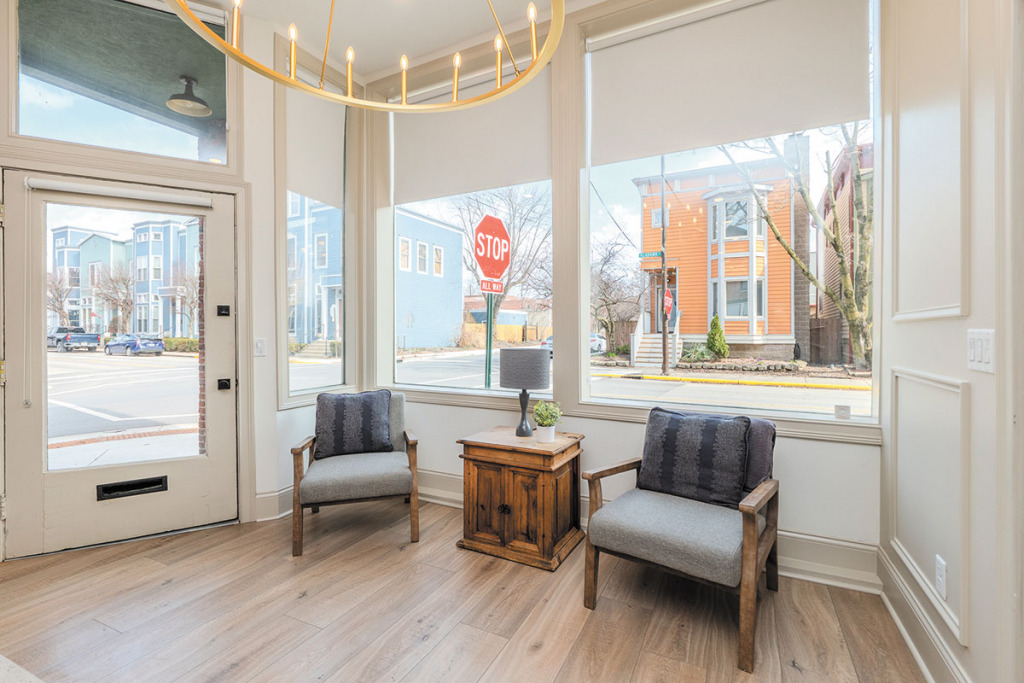
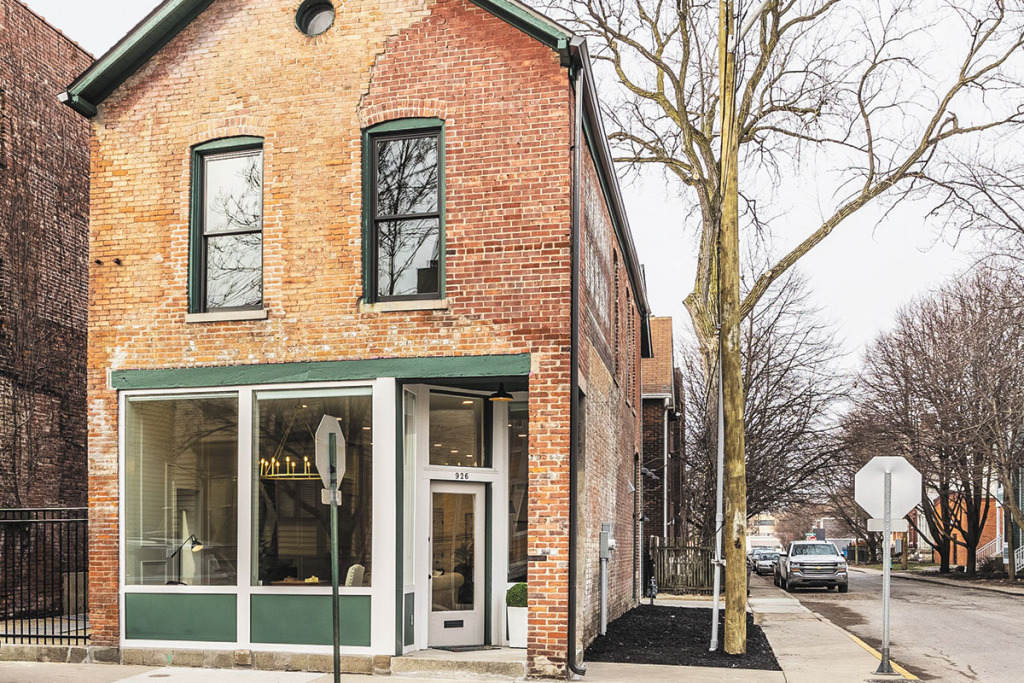
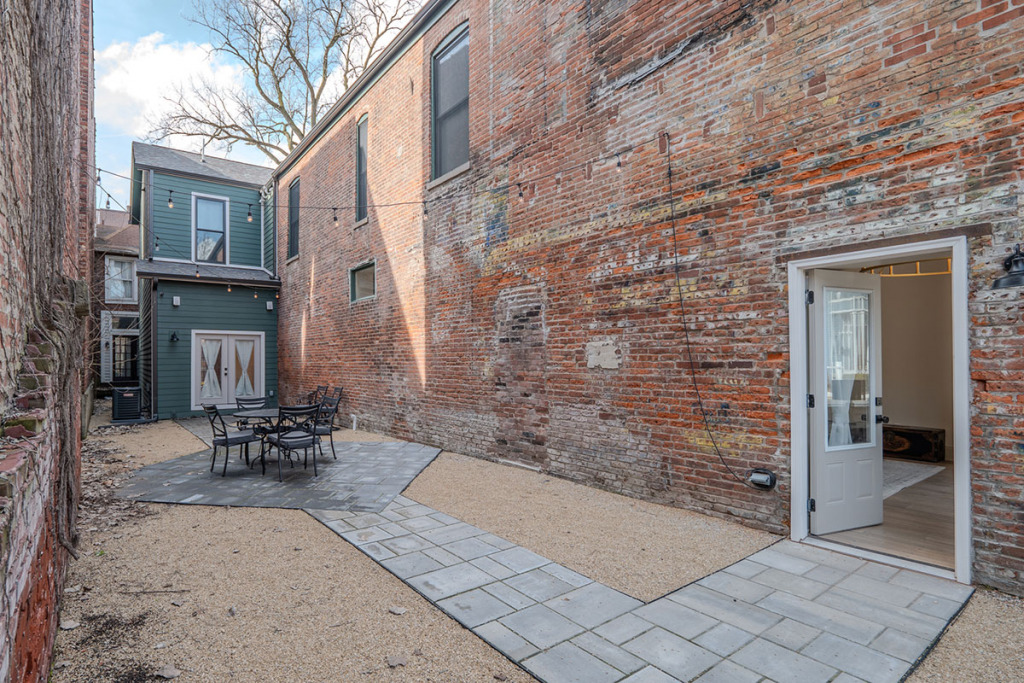
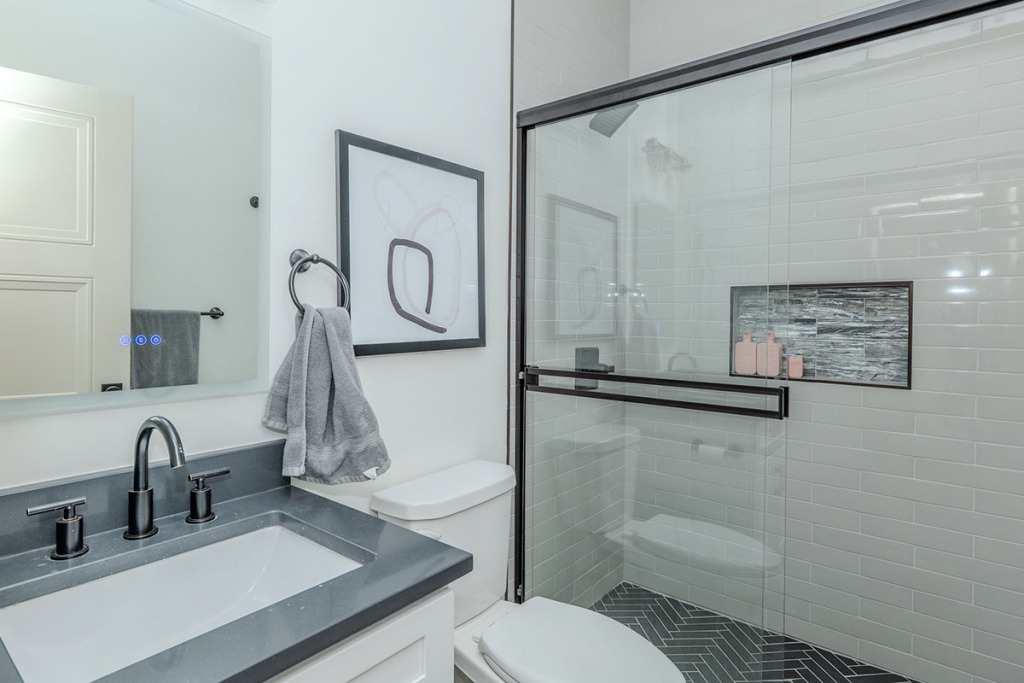
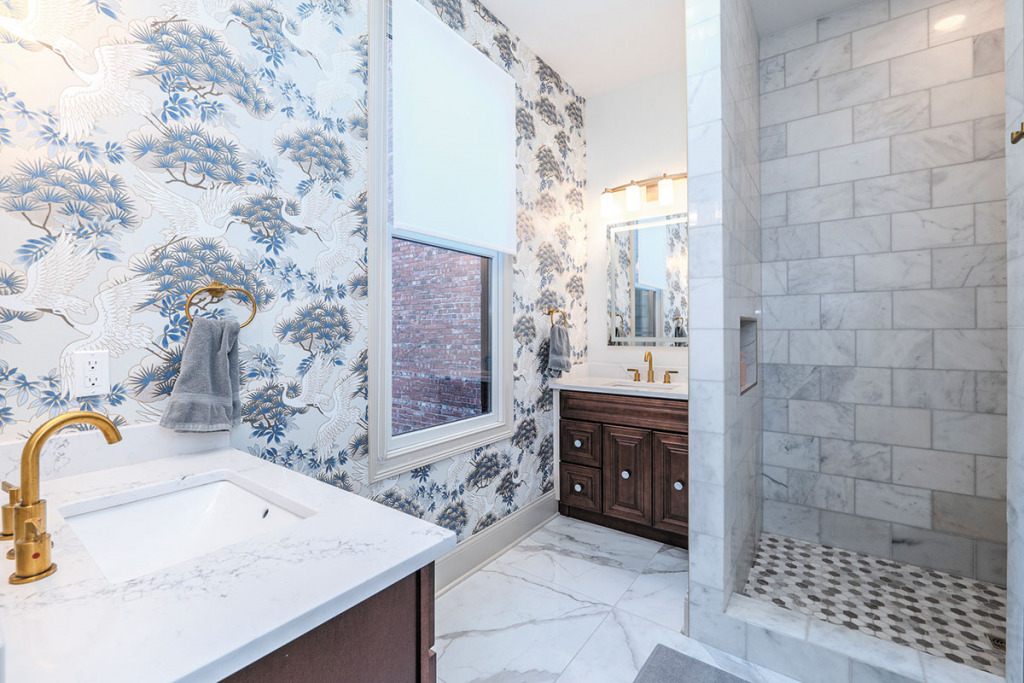
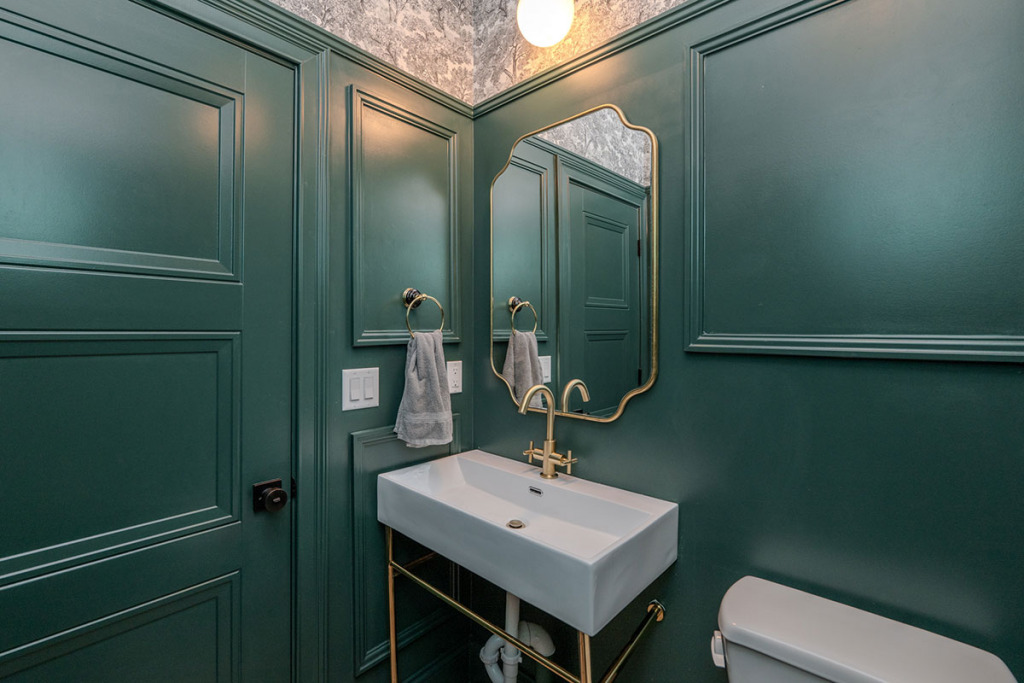
Way cool. Well done.
Bravo. So glad this building was not treated as disposable by the developer class as so many other properties are.
Just a suggestion, the front windows need top down bottom up shades.
The building was occupied by a “cat lady” and when I used to walk by it, the smell would make my eyes water. I’m sure it was gutted down to the bare brick to eliminate anything that could have held onto any smell.
Kudos on a nice renovation.